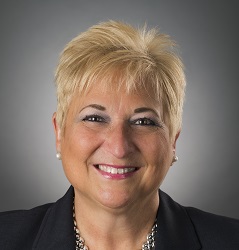The Interim Registrar
 Dr. Jennifer Spielvogel
Dr. Jennifer Spielvogel
Interim Registrar
Southwestern Oklahoma State University (Weatherford, Oklahoma)
Interim registrar positions are difficult assignments for Registry members for a couple of reasons. As I reflect on my two interim registrar assignments through The Registry, competing thoughts come to mind about the challenges of a seasoned higher education executive filling this role.
First, on any campus the Office of the Registrar and all of its functions are often highly technical. The Student Information Systems (SIS) or the Student Module of any enterprise system (Banner, Colleague, etc.) is often the purview of the Registrar. If the SIS is newly launched, the Registrar typically had a lead role in the transition from an old system to a new one, thus creating a situation where everyone with a question about the new system or the legacy system comes to the Registrar for answers. Second, Registrar Office operations, such as document scanning, transcript production, degree/graduation audits, course schedule development, etc. are supported by any number of “tools” that are ever-changing or migrating to a newer version. These choices can be Registrar decisions, or made jointly with IT, and require a level of knowledge that has been “learned” over time in a registrar position.
That the path to the President/Provost rarely runs through the Registrar’s Office is another potential challenge and may be why so few Registry members have registrar experience. Even though my registrar days were in the 1980’s, I’ve had years of experience with institutional research and institutional reporting that required collaboration with the Registrar. As a past VPAA, the Registrar has reported to me, so I have greater familiarity of the Registrar’s functions and role within the institution.
With these challenges in mind, I have had to find creative solutions to succeed as an interim registrar. One way I found to fill the technical knowledge gap was to utilize IT staff. It is imperative in colleges and universities today that a registrar staff member be the technical liaison to IT. With continuous upgrades to enterprise systems, the need for functional technical experts (“funky-techs”) has grown in Admissions and Registrar offices. It is typically not the Registrar who fills this role, but at my assignments with Swarthmore College and Southwestern Oklahoma State University (SWOSU) it was. With the Registrar out, and no trained funky-tech on the team, I relied heavily on IT.
In addition to the Student Information System, many add-on system applications are prevalent in a Registrar’s Office to improve processes and services. Transcript requests, graduation applications, enrollment verifications, etc. are now supported through any number of online forms. My solution to learning how to update these forms was found in a surprising place – Human Resources. As another department that has gone paperless, HR had taken the lead at SWOSU in implementing the online forms tool, and one of its staff was willing to train and support me and the Registrar team.
A final solution to closing my knowledge gap was to reach out to my network, something we do so often and well in higher education. While the AACRAO (American Association of Collegiate Registrars and Admissions Officers) website is full of free training webinars, I’m also lucky to have a couple of current Registrars I can count on to guide me to Registrar’s best practices.
On the positive side, a retired higher education leader brings a lot to the institution that hires an Interim Registrar through the Registry. Registry members typically have a broad range of functional experience that allows an Interim Registrar to easily map processes and/or have conversations with staff about how and why things are done. Oftentimes each Registrar staff member is trained in one specific task – graduation audits, transcript evaluation, records – and is only vaguely familiar with how each function fits with another. At SWOSU, that has been my primary role. Once the staff were involved in a discussion about the entirety of the office, they provided insightful, workable suggestions for improvement. The AACRAO website can also be leveraged with further explanations and examples for each Registrar function.
Retired executives bring a high-level view of operations across the college. This allows the interim Registrar to quickly scan the institution, identify clogs and gaps in registrar functions – whether in processes or in collaborations – and have immediate meaningful conversations with the institution’s leaders. It requires some ability to “translate” registrar language to executive level understanding, but it is important to get others to know all that the Registrar’s office does – often not clear to the executive team.
In addition to providing input on the hiring of a new Registrar, I have found that with my years of experience, many members of the President’s team tend to want to “ask questions” or “pick my brain” about how things are done, beyond the Registrar’s Office, at other institutions. I’m glad to share my wisdom and I appreciate being asked.
As Registry members, we adapt to the situation. Even though my roles have been “Interim Registrar”, I find myself operating more as a registrar consultant. And what makes these interim roles so valuable personally, are comments like this that I received on a recent assignment. “You have helped us so much. We would never have come this far in just a few weeks without you!”
HIRE AN INTERIM
Searching for an Interim?
Please contact us for more information.

